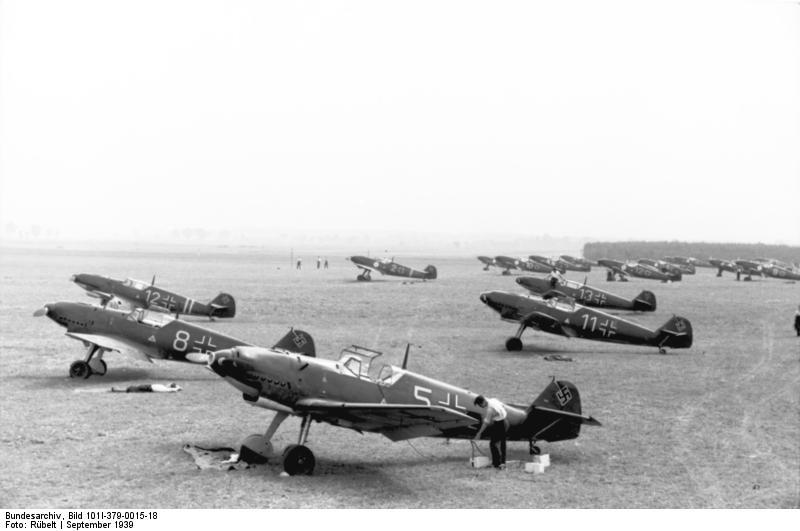Messerschmitt Me-109 Fighters On Grass Field In 1939
Messerschmitt built Germany's primary air superiority fighter during World War II; the Me-109. The single engine Me-109 featured several excellent performance characteristics; it was a light, maneuverable and speedy aircraft. Unfortunately the Me-109, just as the Stuka, only flew short distances. In spite of the Me-109's short range it eventually became the most prolifically produced fighter of the War, with over 35,000 continuously upgraded Me-109 models assembled during the Second World War.
The most common early War model Me-109 was the "Emil", an aircraft that could reach speeds of 357 mph and matched up well with its most advanced early war competitors; the French Dewoitine D.520 fighter and early marks of the British Supermarine Spitfire. Given the D.520 only made it into battle in a limited fashion it was the competition with the Spitfire that was the most important. In this contest, the Me-109E outclassed the Spitfire in several important aspects; including speed at altitudes above 20,000 feet. The Spitfire nonetheless had its own advantages over the Me-109E, and below 20,000 feet the Spitfire's superior handling provided a crucial edge over the Me-109E.
Picture Courtesy of Deutsches Bundesarchiv (German Federal Archive), Bild 101I-379-0015-18


